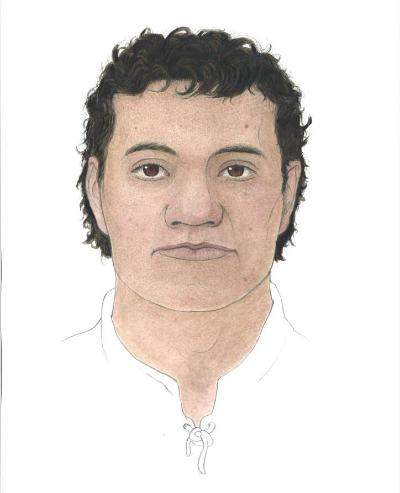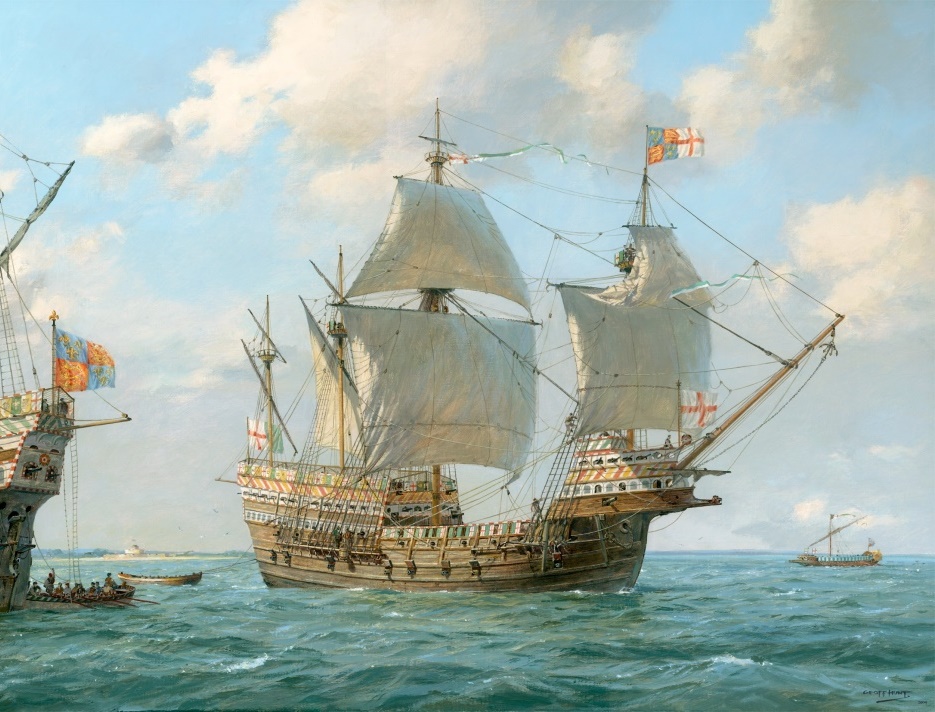Please note, this page has been archived and is no longer being updated.
The crew of Henry VIII’s sunken flagship Mary Rose included sailors of African, Mediterranean and Middle Eastern origin, according to new research, featured on a Channel 4 documentary, which was initiated at Swansea University.
The extraordinary finding, which came as a surprise to the project team, casts the history of the Tudor period in a new light. It shows that the men making up the English navy were far more diverse than had previously been thought.
The documentary is being screened ahead of a major new exhibition at the Mary Rose Museum in Portsmouth. One of the individuals featured is of African origin - a young man whom the programme makers have named Henry.

Picture: a facial reconstruction of Henry, based on analysis of his remains; he was born and raised in southern England, but with North African origins
Henry was between 14 and 18 years old. By analysing oxygen isotopes in his teeth, and levels of sulphur, nitrogen and carbon in his bones, experts can show what his diet was and where he was brought up - in southern England.
However, DNA analysis shows that he was genetically North African, with origins in present-day Morocco or Algeria.
The Mary Rose sank in 1545 in the Solent, during a naval battle with the French, with the loss of hundreds of sailors’ lives. The wreck was raised from the seabed in 1982.
Swansea University has been working closely with the Mary Rose Trust for many years, examining the remains of the sailors and the artefacts on board, shedding new light on the lives of a Tudor naval crew.
The recent research involved experts from the Mary Rose Trust and the universities of Cardiff and Portsmouth, as well as Swansea. The roots of this new finding, however, lie in the work of Dr Nick Owen and team at Swansea University College of Engineering.
Dr Owen and team established that photogrammetry – a method of producing high definition, photorealistic 3-D images – was a very promising method for visually analysing skulls.
This allowed osteologists – bone specialists - to test how effective digital remains were for analysing skeletons to establish sex and ancestry or identify diseases that the individual suffered from, like rickets and scurvy.
During the analysis of the photogrammetry models, Dr Owen and team, working with Oxford Archaeological Ltd, carried out a detailed study of ten skulls of Mary Rose crew members, chosen at random.
It was during this work that one of the skulls, Henry's, was identified as being of African origin.
In 2016, at the British Science Festival, held in Swansea, they released accurate photogrammetry models of ten human skulls from the Mary Rose as interactive 3D digital resources for academic researchers as well as 3D models of other artefacts from the Mary Rose for viewing by the general public (www.virtualtudors.org)
Dr Nick Owen of Swansea University College of Engineering said:
“I’m very proud that this work started in Swansea. The findings show us that a Tudor fighting force was a lot more diverse than we might have imagined.
I have carried out research with the Mary Rose Trust for over 7 years. It has been brilliant, and never fails to throw up the unexpected, shedding more light onto the amazing lives of Tudor seamen. The Mary Rose collection is truly a research treasure trove.”
Watch: an animated flythrough film of the inside of the Mary Rose, based on 3D scans and photographs. Courtesy: University of Southampton and Pat Tanner
The Swansea team also created 3D printed copies of several of the skulls, used for facial reconstruction, that feature in the exhibition at the Mary Rose Museum. This includes an exact copy of Henry's skull but in stunning crystal, which will be one of the highlights of the exhibition.
Further research at Swansea University on the sailors’ lives is likely to follow. There are also plans for an exhibition in Swansea of artefacts from the Mary Rose Museum.
 Picture: painting of the Mary Rose, which sank in Battle of the Solent off Portsmouth in 1545. (Courtesy: Geoff Hunt/Mary Rose Museum)
Picture: painting of the Mary Rose, which sank in Battle of the Solent off Portsmouth in 1545. (Courtesy: Geoff Hunt/Mary Rose Museum)
- Thursday 14 March 2019 15.56 GMT
- Thursday 14 March 2019 16.50 GMT
- Public Relations Office
